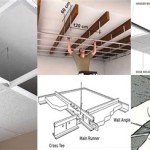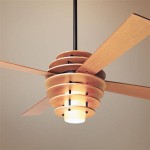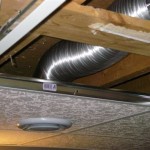How to Affix Tapestry to a Popcorn Ceiling
Affixing a tapestry to a popcorn ceiling presents a unique set of challenges compared to a standard, smooth surface. Popcorn ceilings, characterized by their textured, often fragile surface, require careful consideration to avoid damage and ensure the tapestry remains securely in place. This article details several methods for hanging a tapestry on a popcorn ceiling, outlining the necessary tools, techniques, and potential drawbacks of each approach.
Before commencing any installation, it is crucial to assess the condition of the popcorn ceiling. Aging or poorly adhered texture may be prone to flaking or crumbling, which can compromise the tapestry's hold. In such cases, reinforcing the ceiling, although potentially disruptive, may be a necessary precursor to attaching a tapestry. Alternatively, selecting a lighter tapestry can mitigate the risk of causing damage.
Assessing the Popcorn Ceiling and Preparing for Installation
The initial step involves thoroughly inspecting the popcorn ceiling. Look for any signs of water damage, loose texture, or areas where the texture is already peeling. These areas signify instability and may necessitate repair before proceeding. Gentle probing with a fingertip can reveal the extent of the damage.
Cleaning the ceiling is also essential. Accumulated dust and debris can hinder adhesive effectiveness and compromise the bond. Use a soft brush or a vacuum cleaner with a brush attachment to remove any loose particles. Avoid applying excessive pressure, as this can dislodge the popcorn texture.
Consider the weight and size of the tapestry. A heavier tapestry will require a more robust attachment method compared to a lighter one. Larger tapestries also exert more pressure on the ceiling and may necessitate multiple attachment points to distribute the weight evenly. Choosing a lightweight tapestry designed for wall mounting is generally recommended for popcorn ceilings.
Methods for Attaching Tapestry to Popcorn Ceilings
Several methods can be employed to attach a tapestry to a popcorn ceiling, each with its own advantages and disadvantages. The choice of method depends on factors such as the tapestry's weight, the ceiling's condition, and the desired level of permanence.
1. Adhesive Strips: Adhesive strips designed for textured surfaces are a relatively non-invasive option. These strips typically feature a strong adhesive backing that can adhere to the uneven surface of a popcorn ceiling. However, their holding power is limited, making them suitable only for lightweight tapestries. It's crucial to select strips specifically designed for textured surfaces, as standard adhesive strips may not adhere properly and could damage the ceiling when removed.
To use adhesive strips, clean the designated areas on the ceiling where the strips will be applied. Remove the protective backing from the adhesive strip and firmly press it onto the ceiling. Allow the adhesive to cure for the recommended time (usually 24 hours) before attaching the tapestry. Distribute the strips evenly across the tapestry's top edge to distribute the weight.
2. Hanging with Hooks and Tacks: Picture-hanging hooks and tacks offer a more secure option than adhesive strips, especially for slightly heavier tapestries. These hooks and tacks are designed to pierce the popcorn texture and anchor into the underlying drywall or plaster. However, this method inherently involves creating small holes in the ceiling, which may be visible after removal.
To install a tapestry using hooks and tacks, first, decide on the placement of the tapestry. Hold the tapestry against the ceiling and mark the desired locations for the hooks or tacks. Use a small hammer to gently tap the hooks or tacks into the ceiling. Ensure the hooks or tacks are securely embedded in the drywall or plaster. Hang the tapestry onto the installed hooks or tacks. For larger tapestries, use multiple hooks or tacks to distribute the weight.
3. Staple Gun: A staple gun offers a more permanent and potentially more secure attachment method. However, it also carries the highest risk of damaging the popcorn ceiling. The staples penetrate the texture and anchor the tapestry directly to the underlying surface. This method is best suited for tapestries that will remain in place for an extended period. It’s important to use a staple gun with a short staple length to avoid penetrating too deeply into the ceiling structure.
Before using a staple gun, test a small, inconspicuous area of the ceiling to assess the staple penetration and its impact on the texture. Hold the tapestry in place and carefully staple it to the ceiling along the top edge. Maintain consistent spacing between staples to ensure even weight distribution. Use a staple remover to carefully extract any staples that miss the underlying structure. This method is not recommended for delicate or valuable tapestries as staple removal can cause damage.
4. Using a Fabric Glued to a Wooden batten: This method involves wrapping the top edge of the tapestry on a piece of thin wood and using that glued to the ceiling. Cut the wood to the exact length of the top edge of the tapestry and is thick enough to provide enough surface area for the glue to stick. Wrap the top edge of the tapestry around the wood and use a heavy-duty stapler to fix it to the wood, ensuring it is stretched evenly. Use a strong adhesive such as construction adhesive to glue the wood to the popcorn ceiling. Press firmly and hold in place until the glue sets according to the manufacturer's instructions. This method is more secure than adhesive strips alone, but it still relies on the adhesive, and the weight of the wood plus the tapestry must be considered.
5. Creating a Suspended Frame: This technique involves constructing a lightweight frame from wood or metal and suspending it from the ceiling using hooks and chains. The tapestry is then attached to the frame rather than directly to the popcorn ceiling. This approach minimizes stress on the ceiling texture and allows for easy removal or repositioning of the tapestry.
Measure the dimensions of the tapestry and build a frame slightly larger than the tapestry. Attach hooks to the ceiling joists using screws or anchors. Attach chains to the frame and hang it from the hooks. Ensure the frame is level and secure. Attach the tapestry to the frame using clips or Velcro strips. This method requires more planning and effort but offers a relatively non-invasive solution for hanging tapestries on popcorn ceilings.
Considerations for Tapestry Weight and Ceiling Condition
The weight of the tapestry is a critical factor in determining the most suitable attachment method. Lightweight tapestries, typically those made from thin fabrics, can be adequately supported by adhesive strips or small tacks. Medium-weight tapestries may require heavier-duty hooks or staples. Heavy tapestries, particularly those made from thick materials or incorporating embellishments, necessitate a more robust solution, such as a suspended frame.
The condition of the popcorn ceiling is equally important. Fragile or damaged texture may not be able to support any significant weight. In such cases, reinforcing the ceiling or opting for a completely non-invasive approach, such as a suspended frame, is advisable. Applying adhesive or fasteners to a compromised ceiling can exacerbate the damage and lead to further deterioration.
Before proceeding with any attachment method, test a small, inconspicuous area of the ceiling to assess its response to the chosen adhesive or fastener. This precaution can help identify potential issues and prevent widespread damage. If the texture crumbles easily or the adhesive fails to bond effectively, consider alternative methods or consult with a professional.
Removing Tapestries from Popcorn Ceilings
The removal process should be undertaken with care to minimize damage to the textured surface. The method of removal will depend on the attachment method that was initially used.
For tapestries attached with adhesive strips, gently peel the strips away from the ceiling. Use a plastic scraper to loosen any stubborn adhesive residue. Avoid pulling forcefully, as this can dislodge the popcorn texture. It is advisable to heat the adhesive with a hairdryer for a short period to soften it before attempting removal.
When removing tapestries attached with hooks or tacks, carefully extract the fasteners from the ceiling. Use pliers to gently loosen the hooks or tacks if necessary. Fill the resulting holes with spackle or drywall compound. Smooth the patch with a putty knife and allow it to dry completely. Paint the patched area to match the surrounding ceiling texture.
Removing staples requires a staple remover. Carefully insert the remover under each staple and gently pry it out. Filling the resulting holes can be challenging due to the irregular surface of the popcorn texture. Use a small amount of spackle or drywall compound to fill the holes. Attempt to replicate the texture of the surrounding ceiling by dabbing the patch with a sponge or brush. Paint the patched area to blend it with the existing texture.
If a frame has been used, simply detach the tapestry from the frame. Remove the hooks or fasteners that were used to suspend the frame from the ceiling. Fill any resulting holes with spackle or drywall compound, as described above.
Alternative Solutions and Considerations
If direct attachment to the popcorn ceiling is deemed too risky or undesirable, alternative solutions can be explored. One option is to hang the tapestry from the wall using a curtain rod or tapestry hanging system. This approach eliminates the need to attach anything to the ceiling and minimizes the risk of damage.
Another alternative is to create a decorative panel or frame that can be hung from the wall. The tapestry can be attached to the panel or frame, creating a visually appealing display that does not rely on the ceiling for support. This approach offers greater flexibility in terms of placement and design.
Before undertaking any project involving a popcorn ceiling, it is essential to be aware of potential asbestos concerns. Older popcorn ceilings may contain asbestos, a hazardous material that can pose significant health risks if disturbed. If you suspect that your popcorn ceiling may contain asbestos, consult with a qualified professional before attempting any repairs or modifications.

Putting Up My Tapestries Walltapestry Ceilingtapestry Tapestry Tiktok

How To Hang Things From Popcorn Ceiling Renoviso

How To Hang Things From Popcorn Ceiling Renoviso

How To Hang A Tapestry From The Ceiling In 4 Steps Yoga Mandala

How To Hang Things From Popcorn Ceiling Renoviso

How To Hang Tapestry On Popcorn Ceiling Tiktok Search

How To Hang Things From Popcorn Ceiling Renoviso

What S Under Your Popcorn Ceiling Renoviso

Tutorial For Hanging Tapestries Because They Can Be Difficult If You D Tiktok

21 Ridiculously Clever Ways To Decorate Your Ceiling
Related Posts








